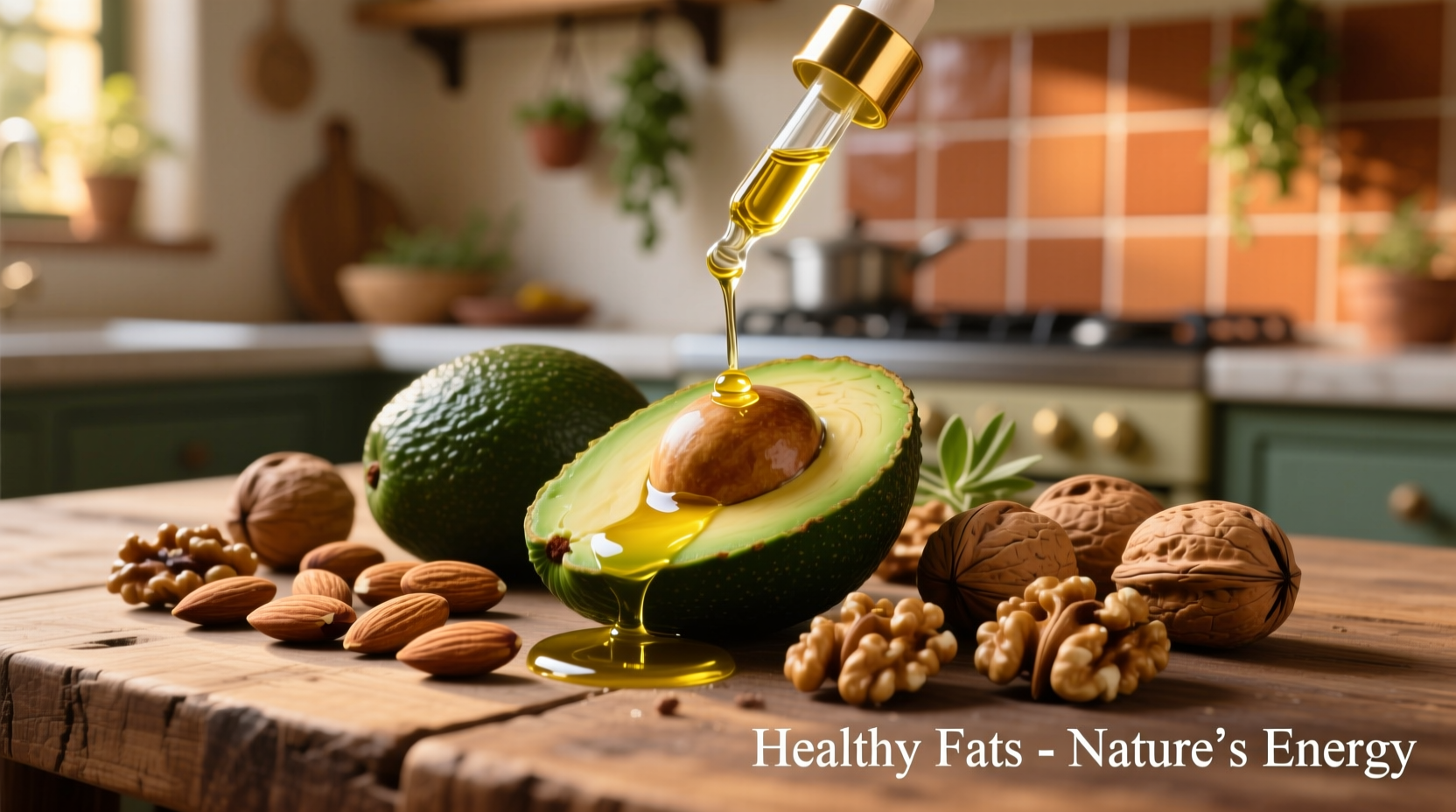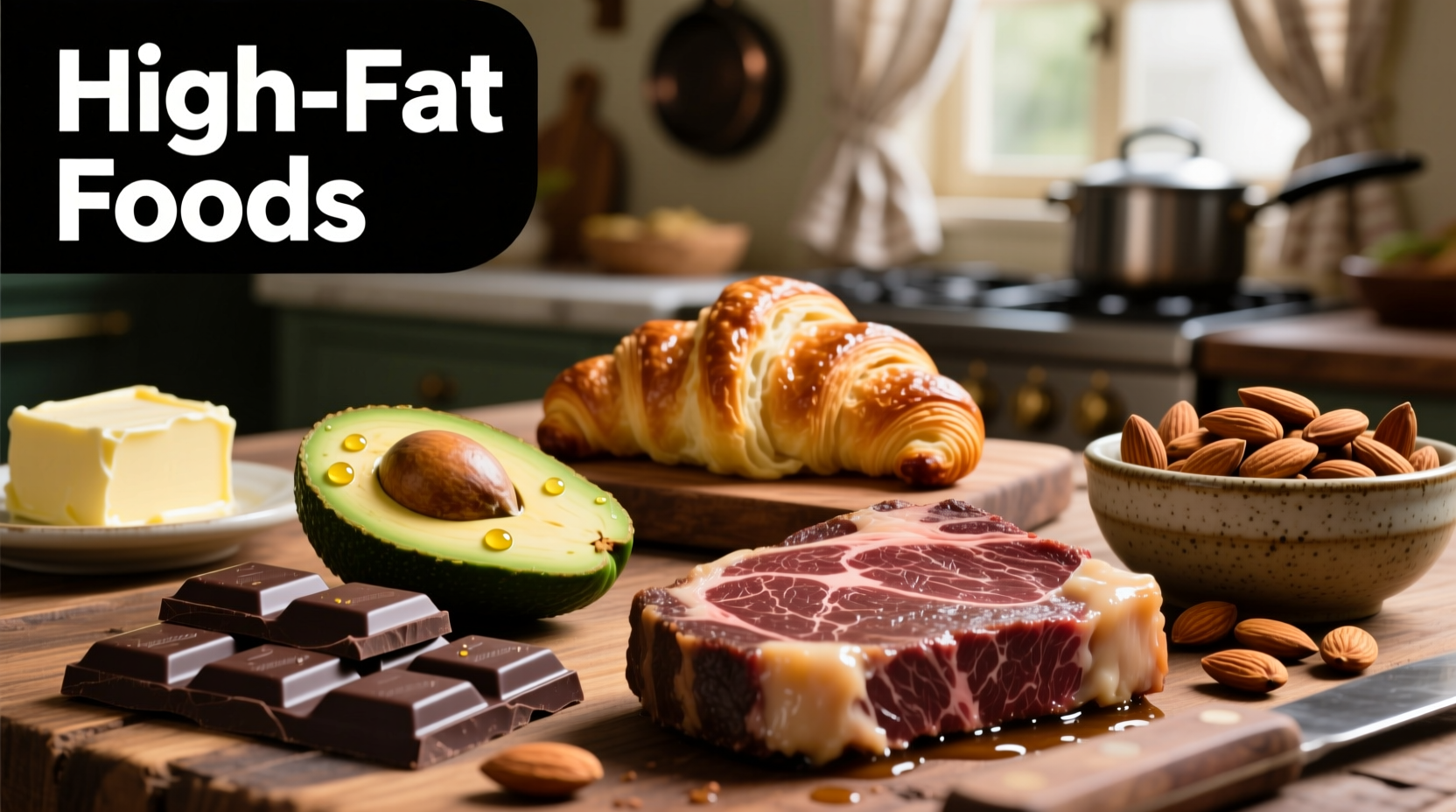High-fat foods include avocados (22g fat per 100g), nuts and seeds (almonds: 49g, chia seeds: 31g), fatty fish (salmon: 13g), full-fat dairy (cheddar cheese: 33g), olive oil (100g), dark chocolate (31g), and coconut products (coconut oil: 100g). Understanding the difference between healthy unsaturated fats and unhealthy saturated/trans fats is crucial for making informed dietary choices.
When you're searching for what food is high fat, you're likely trying to understand which foods contain significant fat content—whether you're monitoring your intake, following a specific diet like keto, or simply curious about nutritional profiles. This guide delivers exactly what you need: a comprehensive, science-backed breakdown of high-fat foods with practical guidance on how to incorporate them wisely into your eating pattern.
Why Fat Matters: Beyond the Calories
Fat isn't just about calories—it's essential for absorbing vitamins, building cell membranes, and supporting brain health. The key is distinguishing between healthy high-fat foods that nourish your body and those that may contribute to health issues when consumed excessively.
Healthy High-Fat Foods Worth Including
Not all fats are created equal. These nutrient-dense options deliver healthy unsaturated fats along with valuable vitamins and minerals:
Fatty Fish: Omega-3 Powerhouses
Fatty fish like salmon, mackerel, and sardines provide essential omega-3 fatty acids that support heart and brain health. A 3-ounce serving of salmon contains approximately 13 grams of fat, mostly heart-healthy unsaturated fats.
| Food | Total Fat (per 100g) | Healthy Fat Percentage | Key Nutrients |
|---|---|---|---|
| Avocado | 15g | 71% unsaturated | Fiber, potassium, vitamins C, E, K |
| Almonds | 49g | 64% unsaturated | Vitamin E, magnesium, protein |
| Chia Seeds | 31g | 63% unsaturated | Omega-3, fiber, calcium |
| Extra Virgin Olive Oil | 100g | 73% unsaturated | Polyphenols, antioxidants |
| Dark Chocolate (70-85%) | 31g | 60% unsaturated | Iron, magnesium, flavonoids |
This nutritional comparison of high fat food list options shows how certain foods deliver not just fat but a wealth of additional nutrients. According to the American Heart Association, replacing saturated fats with unsaturated fats can significantly improve cardiovascular health markers.

High-Fat Dairy: Quality Matters
Full-fat dairy products like Greek yogurt, cheese, and whole milk contain significant fat content. A 1-ounce serving of cheddar cheese provides about 9 grams of fat. Research from the Harvard T.H. Chan School of Public Health suggests that moderate consumption of full-fat dairy may not increase heart disease risk as previously thought, and may even offer benefits for metabolic health.
Processed High-Fat Foods to Approach Mindfully
While some high-fat foods nourish your body, others warrant caution due to their processing methods and additional ingredients:
- Fried foods: French fries, fried chicken (high in unhealthy trans fats when deep-fried)
- Processed meats: Sausages, bacon (high in saturated fats and sodium)
- Baked goods: Pastries, cookies (often contain hydrogenated oils)
- Fast food burgers: Can contain 25-30g of fat per serving
The CDC's National Health and Nutrition Examination Survey shows that Americans typically consume more saturated fats than recommended, with pizza, grain-based desserts, and chicken dishes being top contributors.
When High-Fat Foods Support Your Health Goals
Understanding the context for consuming high-fat foods is essential. For those following keto diet high fat foods requirements, these foods become foundational. The ketogenic diet typically requires 70-80% of calories from fat, making foods like avocados, nuts, and olive oil essential components.
Even for general health, certain high-fat foods play crucial roles:
- Avocados: With 22g of fat per 100g, they provide monounsaturated fats that support heart health
- Nuts and seeds: Almonds (49g fat/100g) and chia seeds (31g) offer protein and fiber alongside healthy fats
- Coconut products: Coconut oil (100g fat) contains medium-chain triglycerides that may support metabolism
Practical Guidance for High-Fat Food Consumption
Instead of avoiding all high-fat foods, focus on making informed choices:
- Prioritize whole food sources over processed options
- Watch portion sizes—healthy fats are calorie-dense
- Balance your plate with vegetables, protein, and high-fat foods
- Read labels to identify hidden trans fats in packaged foods
- Consider your health status—those with certain conditions may need to monitor fat intake more carefully
According to dietary guidelines from the U.S. Department of Agriculture, fats should comprise 20-35% of your daily calories, with saturated fats limited to less than 10% of total calories.
Finding Your Personal Balance with High-Fat Foods
The "right" amount of high-fat foods depends on your individual health goals, activity level, and metabolic health. While some people thrive on higher fat intake, others may need to moderate their consumption. The key is developing awareness of how different high-fat foods affect your energy, satiety, and overall well-being.











 浙公网安备
33010002000092号
浙公网安备
33010002000092号 浙B2-20120091-4
浙B2-20120091-4